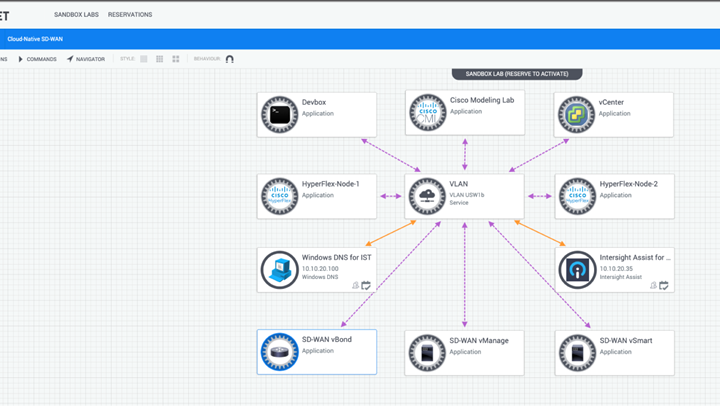- Why I recommend this OnePlus phone over the S25 Ultra - especially at this new low price
- I replaced my laptop with Microsoft's 12-inch Surface Pro for weeks - here's my buying advice now
- This palm recognition smart lock doubles as a video doorbell (and has no monthly fees)
- Samsung is giving these Galaxy phones a big One UI upgrade - here's which models qualify
- 7 MagSafe accessories that I recommend every iPhone user should have
Bridge the Gap Between SD-WAN Technologies and Cloud-native Applications

The Wide Area Network is often in the critical path of your application workflow. Especially when users are about to complete revenue-impacting transactions, WAN resources should be allocated to minimize application performance degradation. I want to illustrate how hybrid cloud applications, deployed via Cisco IKS, can leverage the Cloud-Native SD-WAN API (Application Programming Interface) to discover and optimize those mission critical application flows.
Access to applications hosted in Kubernetes across Wide Area Networks (WANs) is a standard pattern for enterprise apps. At the same time, Software-Defined WAN (SD-WAN) technologies are becoming popular since they democratize WAN access patterns across the Internet. They do this through latency reduction, throughput improvement, and packet loss prevention. Unfortunately, there is not much integration between SD-WAN and Kubernetes. In most cases (if not all) Kubernetes and SD-WAN are like ships passing in the night.
Hybrid cloud applications, deployed via Cisco IKS, can leverage the Cloud-Native SD-WAN API to discover and optimize mission critical application flows.
Cloud-Native SD-WAN
Interestingly, most SD-WAN solutions offer APIs that allow you to programmatically influence how the traffic is handled over the WAN. This enables interesting opportunities for automation and application optimization. There is an opportunity to pair the declarative nature of Kubernetes with the programmable nature of modern SD-WAN solutions to automatically optimize application experience over the WAN. With that goal, the Cloud-Native SD-WAN project offers a reference implementation for how SD-WAN controllers can use Kubernetes application metadata to optimize application WAN traffic, and link Kubernetes application attributes with SD-WAN network capabilities.
Cloud-Native WAN Learning Module
The new learning lab module will give you an introduction to the Cloud-Native WAN project. A second module shows you how to set up a service registry on Kubernetes, and create and configure a CN-WAN adaptor, followed by a CN-WAN reader. Finally, you’ll learn how to add a new SD-WAN policy and add a new video streaming service.

The new learning lab module will give you an introduction to the Cloud-Native WAN project.
Cloud-Native SD-WAN Sandbox
The Cloud-Native SD-WAN is a set of components that can automate the process of optimizing SD-WAN for each externally exposed microservice. It helps NetOps and DevOps teams to achieve their common goal of providing a better application experience. This combines Cisco SD-WAN and Cisco IKS platforms with open-source tools to help configure and set policies on a wide area network.

Try it yourself in the new sandbox
The new sandbox and learning lab modules are ready for you to dive right in and try it yourself. See how you can bridge the gap between SD-WAN technologies and cloud-native applications running on Kubernetes.
Resources to get you started
We’d love to hear what you think. Ask a question or leave a comment below.
And stay connected with Cisco DevNet on social!
LinkedIn | Twitter @CiscoDevNet | Facebook | YouTube Channel
Share:

